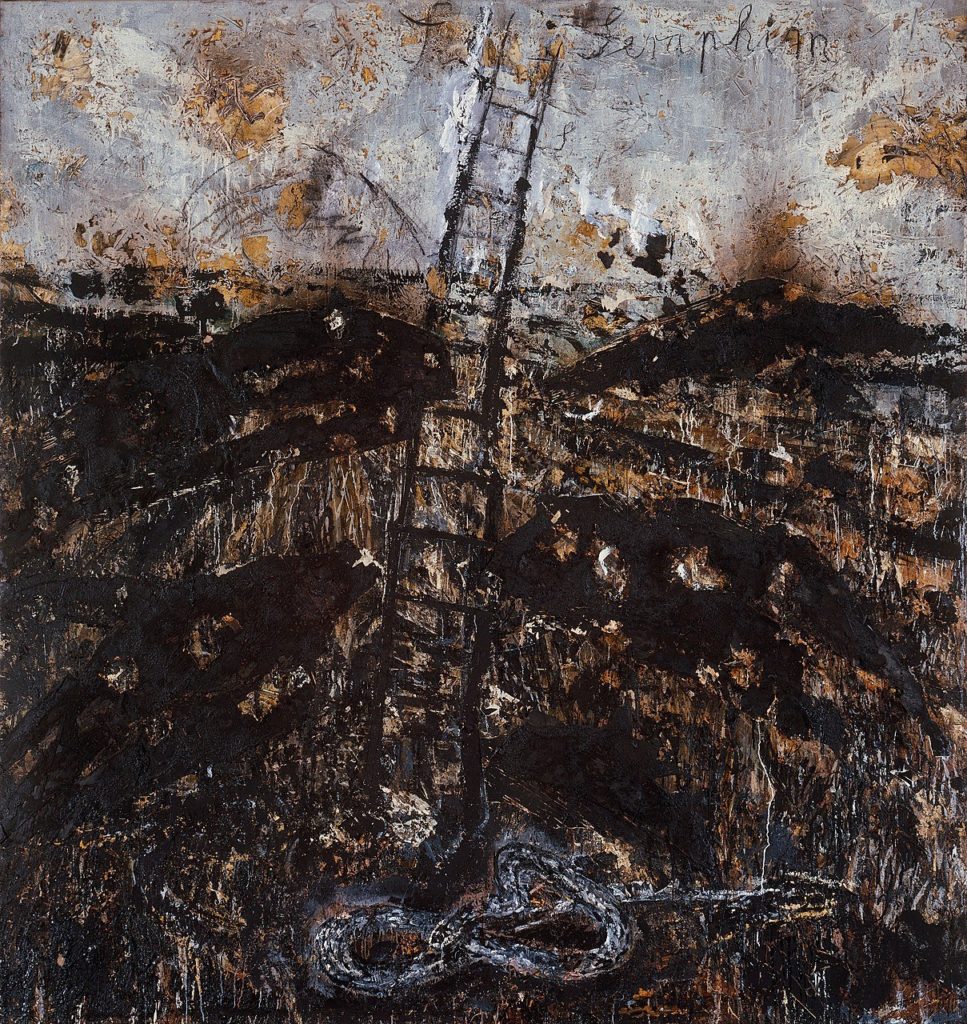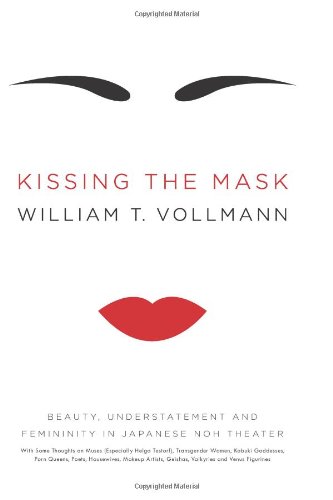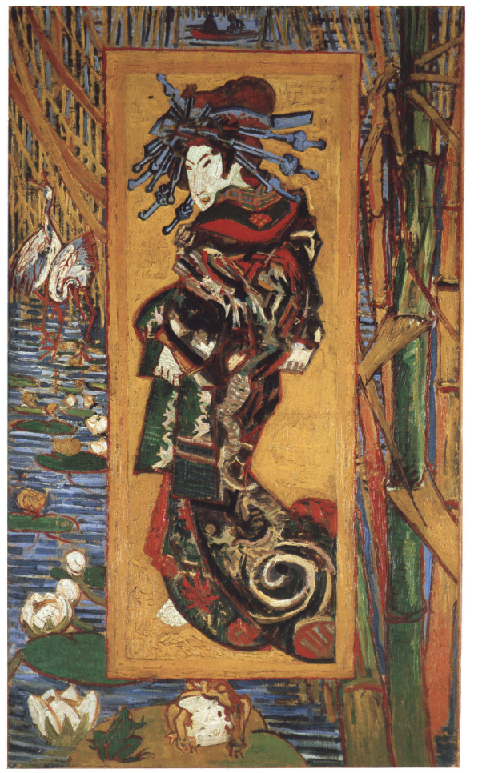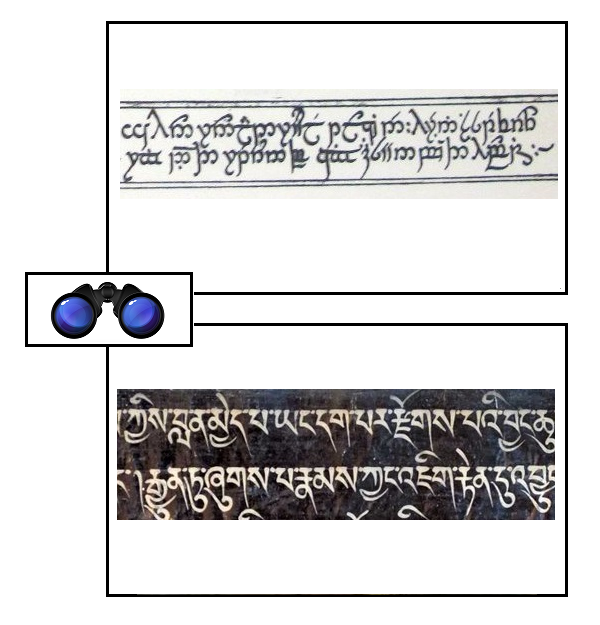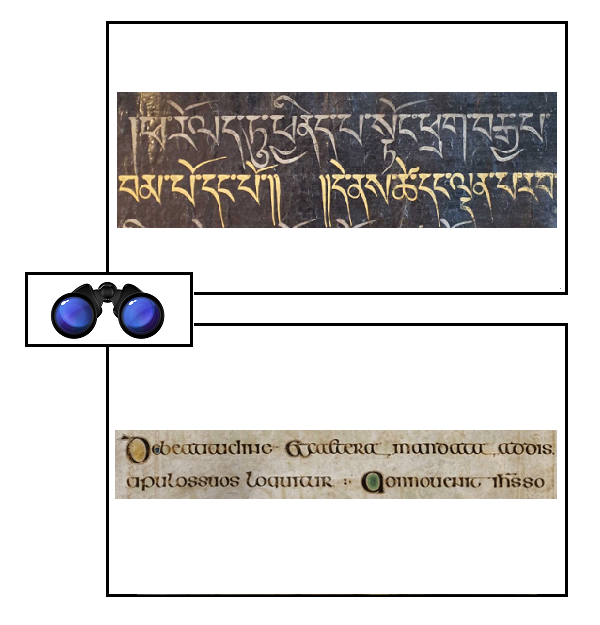Worlds within the world: studio of Kiefer, mind of Vollmann
Monday, February 24th, 2020[ by Charles Cameron — the worlds within this world are to be found in the workshops of Anselm Kiefer and William Vollmann ]
.
Artist one of two: Anselm Kiefer:
Kiefer devoted himself to investigating the interwoven patterns of German mythology and history and the way they contributed to the rise of Fascism. He confronted these issues by violating aesthetic taboos and resurrecting sublimated icons. For example, in his 1969 Occupations series, Kiefer photographed himself striking the “Sieg Heil” pose. Subsequent paintings—immense landscapes and architectural interiors, often encrusted with sand and straw—invoke Germany’s literary and political heritage. References abound to the Nibelungen and Wagner, Albert Speer’s architecture, and Adolf Hitler.
Interwoven patterns? The Nibelungen? Albert Speer?
Seraphim? Jacob’s ladder, on which angels travel up and down? And in this time of nuclear and gas chamber holocausts, have they abandoned the ladder?
Seraphim is part of Kiefer’s Angel series, which treats the theme of spiritual salvation by fire, an ancient belief perverted by the Nazis in their quest for an exclusively Aryan nation.
Spiritual salvation by fire?
Okay, This fellow has the kind of dark mythological intensity that interests me. Let’s take a stroll through this man’s world — a deeper dive into his studio.
In we go:–
It was like a world inside the world. Huge metal slabs were leaning against the walls. Helter-skelter around them, on racks with wheels, stood large paintings of oceans and beaches, rivers and meadows, mountains and forests, some covered with corroded ravines of lead. Vitrines in every size were standing everywhere, filled with the strangest things: the roots of trees, rusty hammers, little clay pigs. Shelves that ran the length of the hall were stacked with balance scales, hooks, rifles, stoves, snakes, torpedoes, piles of bricks, heaps of dried flowers, even whole trees. There were more full-size fighter jets and a cage that was maybe 300 square feet that was filled with golden wheat and what appeared to be the cooling tower of a nuclear power plant with a bicycle dangling down the side.
Torpedoes! Whole fighter jets! Whole trees!
Kiefer‘s paintings, we learn, are overwhelming, dark and vast — Seraphim‘s a good example — enforcing silence before their enormous intensity. And then, suddenly — watercolors, “brimming with color — sparkling blues and brilliant reds” as bright as the moments of a life, and thus as intensely personal as the dark vast paintings had been impersonal and overbearing — as is, one is forced to admit, our century.
He’s an artist — exhibit number one.
**
Here’s exhibit number two: the mind of William Vollmann..
Deep dive number two:
Bill greeted me warmly and showed me around the art-making area of his bunker, where he has a power engraver—he was working on a suite of Norse block prints when I visited—and where he prints his Dolores photographs using an arcane 19th century method called gum bichromate, which takes up to 28 days to produce a single print. Then he led me to the walk-in.
What’s in here?
This is the meat locker, where Dolores’s parts are. When the electrician wired it up, he asked, “What do you use this for?” I said, “Oh, that’s just where I keep my victims.” There was a long silence….She’s got her dresses here and I have my bulletproof helmet and various stuff from my journalism in there
Lecter, Hannibal? “That’s just where I keep my victims”?
Vollmann, like Kiefer, is possessed of a world both dark and sparkling bright. The sheer extent of his variety, too, is impressive, overwhelming.
I have in my room at the Pine Creek Care Center only two smallish bookshelves, and in them one book of Vollmann‘s: Kissing the Mask: Beauty, Understatement and Femininity in Japanese Noh Theater. I mean, how not?
Kissing the Mask is so packed with beauty, understatement — erotics, Japan, Noh, Vollmann himself, Noh backstage, behind-the-scenes, photographs — ” a string ball of thoughts” — I’d like to say “torpedoes .. even whole trees” but Vollmann‘s world within the world is other than Kiefer’s, as though there were room for two worlds within our world — three perhaps — though I’ve yet to encounter the third — “with Some Thoughts on Muses (Especially Helga Testorf), Transgender Women, Kabuki Goddesses. porn queens, poets, housewives, makeup artists, geishas, valkyries, and Venus figurines” Vollmann addsall this in small print at the bottom of the book’s cover.
And Valkyries!
It takes my reading glasses and a Sherlock Holmes magnifying glass to read these days, and my copy of the abridged, one-volume Rising Up and Rising Down: Some Thoughts on Violence, Freedom and Urgent Means is in storage — a book fate which I both mourn and feel intense gratitude for.
When Vollmann turns to consider violence — “to establish a moral calculus to consider the causes, effects, and ethics of violence” as Wikipedia has it — he spends twenty and more years on the task.
The abridgment, Vollmann says, he made in half an hour, for the money. Truth to the work’s title is to be found in the $700, seven-volume original set, 3,500 copies. Even with dollar-store glasses and Holmes’ magnifying glass — enhanced with the option of bright light the better to read by — seven volumes is beyond me, as 700 pages of the condensed would be.
And there are yet other Vollmanns, with other worlds..
**
Oh but let Van Gogh have the last word, eh, Vollmann?
Vincent Van Gogh, Japonoiserie, The Courtesan
**
Sources
Guggenheim, Kiefer, Seraphim NYT, Into the Black Forest With the Greatest Living Artist 3 am, becoming dolores: william t. vollmann exposes his female alter ego Wikipedia, William T. Vollmann Metropolitan Publications, Van Gogh in Arles
